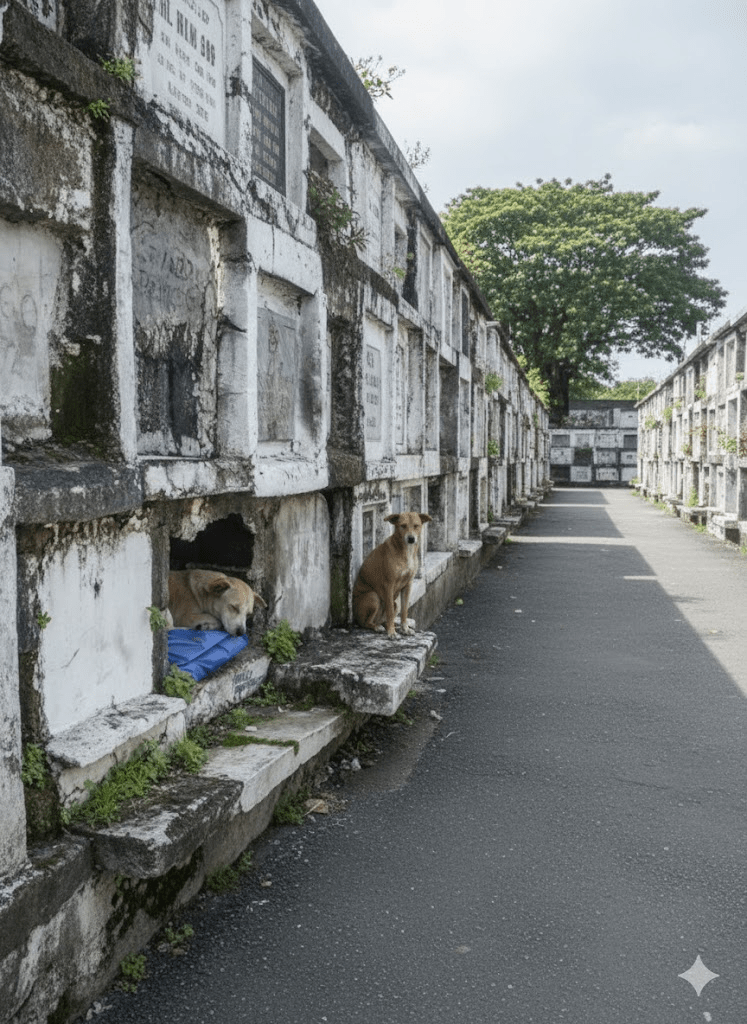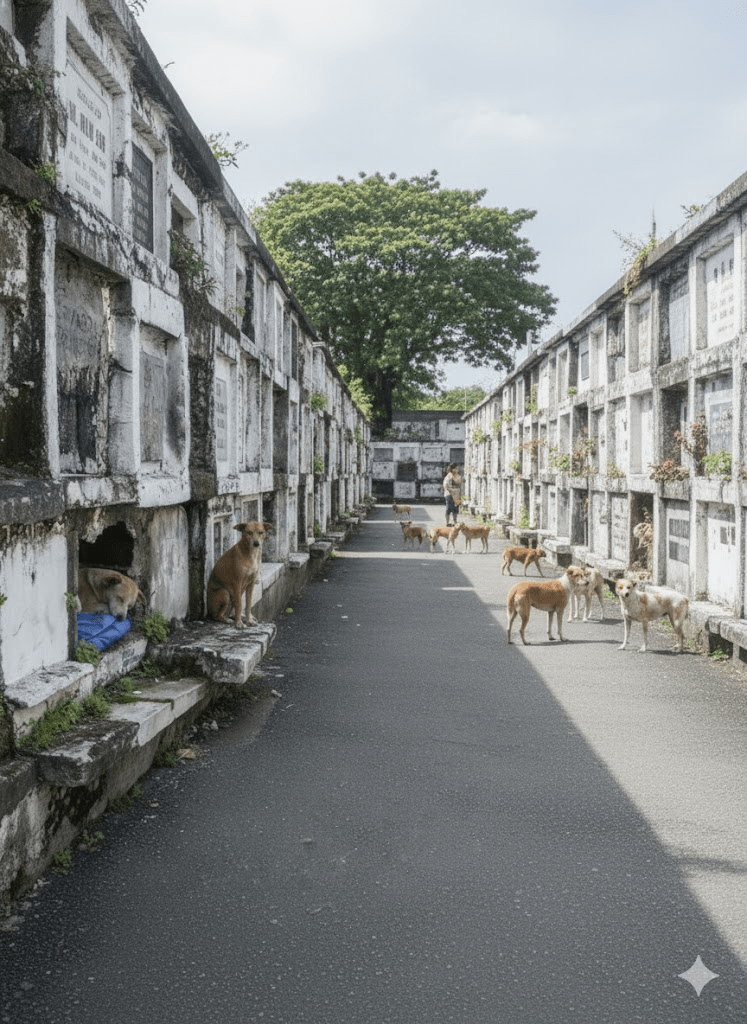The bustling metropolis of Manila, a city of vibrant life and stark contrasts, holds within its heart stories that often go unnoticed by the hurried passerby. One such narrative unfolds in its historic cemeteries, places typically associated with solemn remembrance and finality. Here, amidst weathered stone and fading inscriptions, a different kind of life thrives—one characterized by unwavering loyalty and a remarkable adaptability. The image of a dog nestled within a crypt, its eyes reflecting a quiet vigilance, offers a poignant glimpse into the lives of the stray animals that call these grounds home. Far from being mere scavengers, these dogs often assume an unexpected role: guardians. They patrol the labyrinthine paths, their presence a silent comfort to those visiting their loved ones, and in return, they find shelter and sustenance within the very spaces meant for the departed. This symbiotic relationship, born out of necessity and nurtured by a shared existence, challenges our conventional perceptions of urban wildlife and highlights the profound capacity for connection even in the most unconventional of settings. It compels us to look beyond the surface, to recognize the intricate tapestries of life that unfold in every corner of our world, particularly in those places we might least expect.

The history of cemeteries as impromptu shelters for stray animals is not unique to Manila, but the scale and integration seen here are particularly striking. These are not merely temporary havens; for many dogs, the cemetery becomes a permanent territory, a home passed down through generations. The structures, designed for the eternal rest of humans, offer unexpected nooks and crannies that provide refuge from the elements – rain, sun, and the general clamor of city life. The stacked crypts, with their individual compartments, serve as ready-made dens, surprisingly secure and often hidden from plain sight. The very design that makes them functional for human interment also makes them remarkably suitable as a habitat for these resilient animals, a testament to nature’s ability to adapt and find sanctuary in the most unlikely places.

However, this existence is not without its challenges. While the cemetery offers protection, food sources can be inconsistent. Many of these dogs rely on the kindness of visitors who bring offerings for their departed loved ones, or intentionally leave food and water for the resident canines. This interaction creates a unique dynamic, blurring the lines between mourner and caretaker, and between the living and the symbolically living. The dogs, in turn, often become familiar faces, recognized by regular visitors, creating small, informal communities of mutual support within the solemn grounds. Their presence, though sometimes surprising, adds an unexpected layer of life and warmth to an otherwise somber environment.







